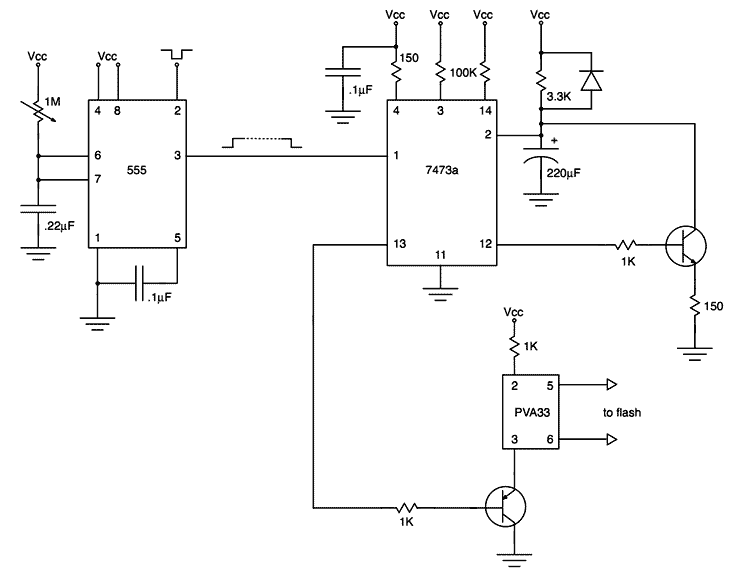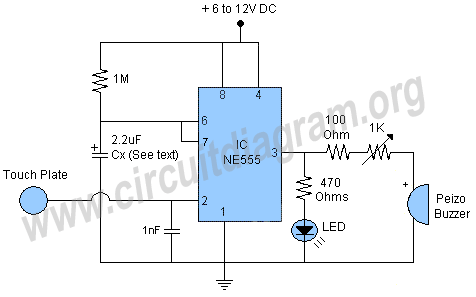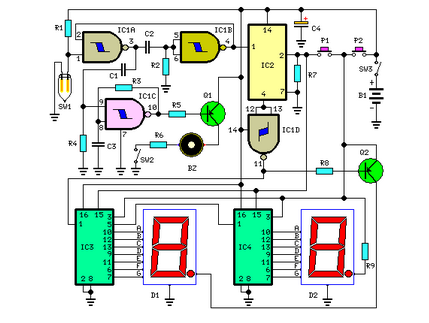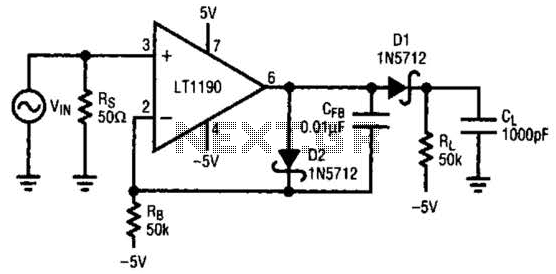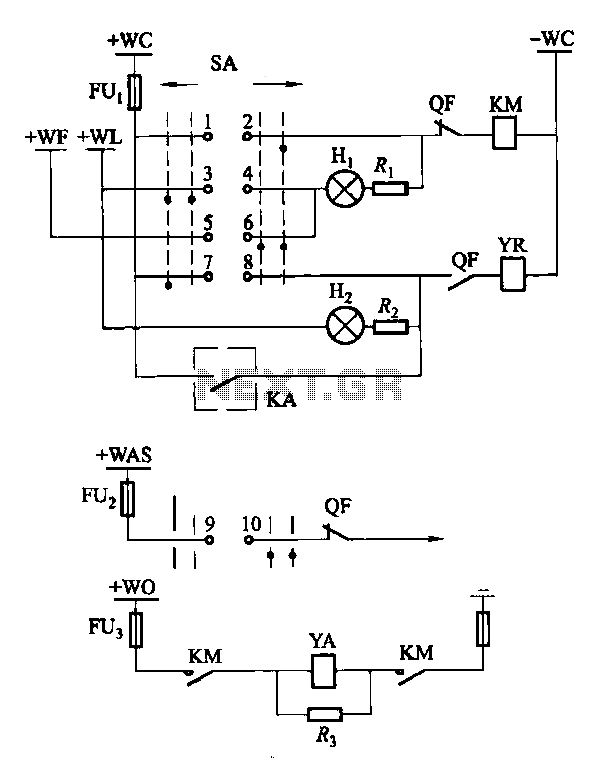
SMD FM Transmitter Circuit
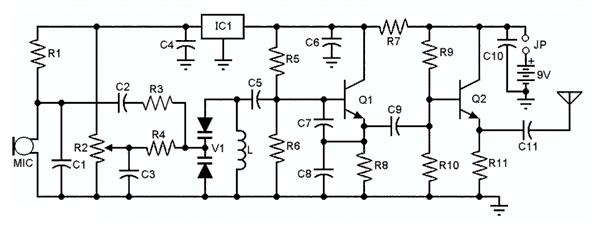
Construct a low-power FM transmitter using surface-mount devices (SMD) that can be received by a standard FM radio.
The proposed low-power FM transmitter circuit utilizes surface-mount devices (SMD) to achieve compactness and efficiency. The primary components of the circuit include an oscillator, modulator, amplifier, and an antenna.
The oscillator generates a carrier frequency in the FM band, typically around 88-108 MHz, which is the standard range for FM radio transmission. A common choice for the oscillator is a Colpitts or Hartley oscillator configuration, which can be implemented using SMD transistors or integrated circuits (ICs) designed for RF applications.
The modulator section is responsible for varying the frequency of the carrier signal according to the audio input. This can be achieved using a varactor diode or an audio transformer, which modulates the frequency of the oscillator based on the audio signal's amplitude. The audio input can be sourced from various devices, such as a microphone or an audio player, ensuring compatibility with standard audio outputs.
Following modulation, an amplifier is necessary to boost the power of the RF signal before transmission. This stage can be implemented using SMD RF amplifier ICs, which are designed to operate efficiently at the desired frequency. The amplifier should be configured to provide sufficient gain while minimizing distortion, ensuring a clear signal is transmitted.
Finally, the antenna is a crucial component for effective transmission. A simple dipole or monopole antenna can be constructed using SMD components or external materials, tuned to the desired frequency for optimal performance. Proper impedance matching between the amplifier output and the antenna is essential to maximize power transfer and minimize signal loss.
Overall, this low-power FM transmitter circuit is designed with efficiency in mind, utilizing surface-mount technology to create a compact and effective device for short-range audio broadcasting.Let`s construct a low-power FM transmitter using surface-mount devices (SMD) that will be received with a standard FM radio. Soldering surface mounted devi.. 🔗 External reference
The proposed low-power FM transmitter circuit utilizes surface-mount devices (SMD) to achieve compactness and efficiency. The primary components of the circuit include an oscillator, modulator, amplifier, and an antenna.
The oscillator generates a carrier frequency in the FM band, typically around 88-108 MHz, which is the standard range for FM radio transmission. A common choice for the oscillator is a Colpitts or Hartley oscillator configuration, which can be implemented using SMD transistors or integrated circuits (ICs) designed for RF applications.
The modulator section is responsible for varying the frequency of the carrier signal according to the audio input. This can be achieved using a varactor diode or an audio transformer, which modulates the frequency of the oscillator based on the audio signal's amplitude. The audio input can be sourced from various devices, such as a microphone or an audio player, ensuring compatibility with standard audio outputs.
Following modulation, an amplifier is necessary to boost the power of the RF signal before transmission. This stage can be implemented using SMD RF amplifier ICs, which are designed to operate efficiently at the desired frequency. The amplifier should be configured to provide sufficient gain while minimizing distortion, ensuring a clear signal is transmitted.
Finally, the antenna is a crucial component for effective transmission. A simple dipole or monopole antenna can be constructed using SMD components or external materials, tuned to the desired frequency for optimal performance. Proper impedance matching between the amplifier output and the antenna is essential to maximize power transfer and minimize signal loss.
Overall, this low-power FM transmitter circuit is designed with efficiency in mind, utilizing surface-mount technology to create a compact and effective device for short-range audio broadcasting.Let`s construct a low-power FM transmitter using surface-mount devices (SMD) that will be received with a standard FM radio. Soldering surface mounted devi.. 🔗 External reference
